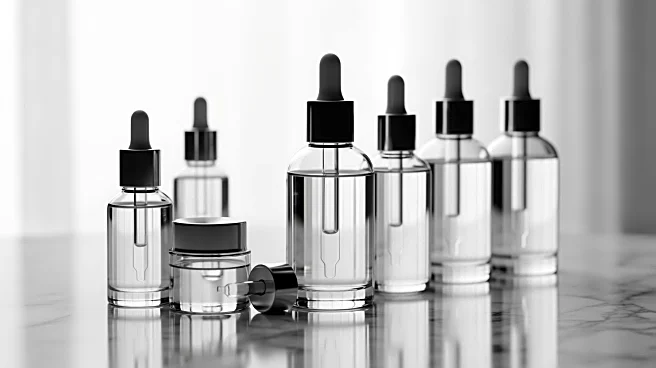What's Happening?
The global scar treatment market is expected to grow significantly, reaching USD 17.83 billion by 2032, according to Coherent Market Insights. This growth is driven by increasing demand for aesthetic enhancements
and the rising incidence of surgical procedures, burns, and trauma cases. Topical scar products, such as gels and creams, dominate the market due to their convenience and regulatory approvals. North America currently leads the market, while the Asia Pacific region is emerging as a high-growth area due to expanding healthcare access and rising consumer awareness.
Why It's Important?
The projected growth of the scar treatment market reflects broader societal trends towards aesthetic improvements and self-image consciousness. As more individuals seek cosmetic interventions to minimize skin imperfections, the demand for scar treatment products is likely to increase. This trend presents lucrative opportunities for manufacturers and healthcare providers, particularly in regions with expanding access to aesthetic treatments. However, the high cost of advanced scar treatments may limit accessibility, especially in low- and middle-income areas, potentially affecting market dynamics.
What's Next?
The scar treatment industry is poised for further innovation, with advancements in technologies such as laser therapies and regenerative medicine. Companies may focus on developing cost-effective solutions to address financial barriers and expand market reach. Additionally, the rise of online retail platforms and over-the-counter products is expected to make scar treatments more accessible, facilitating early intervention and self-management. Stakeholders will likely continue to monitor consumer trends and technological developments to capitalize on growth opportunities.
Beyond the Headlines
The increasing demand for scar treatments highlights evolving beauty standards and the influence of social media on self-image. This cultural shift underscores the importance of addressing psychological aspects of aesthetic treatments, as individuals seek solutions not only for physical improvement but also for enhanced confidence and self-esteem. The market's growth also raises ethical considerations regarding the accessibility and affordability of cosmetic interventions, prompting discussions on equitable healthcare access.











